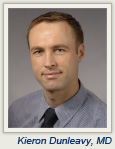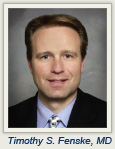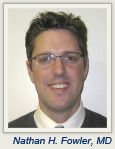The 11th International Conference on Malignant Lymphoma was held June 15–18 in Lugano, Switzerland. More than 3,000 hematologists, clinical oncologists, pathologists, and researchers attended the meeting, which was first convened in 1981. Topics of discussion included lymphoma staging in the new millennium, lymphoma and its microenvironment, and lymphoma cure vs control. The ASCO Post has selected several key presentations for summary in the following roundup.
DA-EPOCH-R in c-MYC–positive Aggressive B-cell Lymphomas
 The c-MYC–positive aggressive B-cell lymphomas—eg, Burkitt lymphoma and c-MYC–positive diffuse large B-cell lymphoma—are characterized by high proliferation and poor outcomes with CHOP-based regimens (cyclophosphamide, doxorubicin, vincristine, and prednisone). Multiagent intensive chemotherapy is effective in Burkitt lymphoma, but is associated with significant toxicity and mortality. Some 10% of diffuse large B-cell lymphoma cases are c-MYC–positive and exhibit poor outcome with R-CHOP (rituximab [Rituxan] plus CHOP).
The c-MYC–positive aggressive B-cell lymphomas—eg, Burkitt lymphoma and c-MYC–positive diffuse large B-cell lymphoma—are characterized by high proliferation and poor outcomes with CHOP-based regimens (cyclophosphamide, doxorubicin, vincristine, and prednisone). Multiagent intensive chemotherapy is effective in Burkitt lymphoma, but is associated with significant toxicity and mortality. Some 10% of diffuse large B-cell lymphoma cases are c-MYC–positive and exhibit poor outcome with R-CHOP (rituximab [Rituxan] plus CHOP).
In a prospective trial in 31 adult patients with untreated Burkitt lymphoma performed by Kieron Dunleavy, MD, and colleagues at NCI, treatment with DA-EPOCH-R (dose-adjusted etoposide, prednisone, vincristine, cyclophosphamide, and doxorubicin plus rituximab) resulted in event-free and overall survival rates of 97% and 100%, respectively, at a median follow up of 57 months.
Analysis for c-MYC in 108 previously untreated patients with diffuse large B-cell lymphoma who had received DA-EPOCH-R at NCI or in a multicenter Cancer and Leukemia Group B study showed that 9 (8%) were c-MYC–positive. At a median follow-up of 48 months, event-free survival was 83% in c-MYC–positive cases and 76% in c-MYC–negative cases (P = NS), suggesting that DA-EPOCH-R treatment is not associated with worse outcome in c-MYC–positive cases.
Notable toxicities in the NCI prospective Burkitt lymphoma study consisted of tumor lysis syndrome in one patient and fever/neutropenia in 16% of treatment cycles. A confirmatory multicenter study of risk-adapted DA-EPOCH-R is underway in Burkitt lymphoma and c-MYC–positive diffuse large B-cell lymphoma.
“Our study suggests that DA-EPOCH-R is very effective in aggressive c-MYC–positive B-cell lymphomas—Burkitt lymphoma and diffuse large B-cell lymphoma,” Dr. Dunleavy told The ASCO Post. “The outcome for patients with c-MYC–positive diffuse large B-cell lymphoma is poor with standard therapy, but DA-EPOCH-R appears to be effective in this group of patients. Based on these results, a confirmatory multicenter study of DA-EPOCH-R in Burkitt lymphoma and c-MYC–positive diffuse large B-cell lymphoma was designed and currently is ongoing,” said Dr. Dunleavy. ■
Financial Disclosure: Dr. Dunleavy reported no potential conflicts of interest.
Dunleavy K, et al: MYC + aggressive-B-cell lymphomas: Novel therapy of untreated Burkitt lymphoma (BL) and MYC + diffuse large B-cell lymphoma (DLBCL) with DA-EPOCH-R (Abstract 071).
Autologous vs Reduced-intensity Allogeneic Stem Cell Transplantation in Mantle Cell Lymphoma
 Timothy S. Fenske, MD, and colleagues from the Center for International Blood and Marrow Transplant Research at the Medical College of Wisconsin analyzed outcomes of 640 patients with mantle cell lymphoma undergoing a first autologous (n = 433) or reduced-intensity allogeneic (n = 207) stem cell transplantation. Their findings indicate that allogeneic transplantation is associated with higher treatment-related mortality but similar 5-year overall survival compared with autologous transplantation and that patients undergoing transplantation early in disease course have better survival outcomes than do more heavily pretreated patients.
Timothy S. Fenske, MD, and colleagues from the Center for International Blood and Marrow Transplant Research at the Medical College of Wisconsin analyzed outcomes of 640 patients with mantle cell lymphoma undergoing a first autologous (n = 433) or reduced-intensity allogeneic (n = 207) stem cell transplantation. Their findings indicate that allogeneic transplantation is associated with higher treatment-related mortality but similar 5-year overall survival compared with autologous transplantation and that patients undergoing transplantation early in disease course have better survival outcomes than do more heavily pretreated patients.
Among 50 patients undergoing allogeneic transplant and 251 with autologous transplant for early mantle cell lymphoma—ie, patients who were in first complete or partial remission after one or two prior chemotherapy treatments—1-year treatment-related mortality was significantly higher in the allogeneic group (25% vs 4%, P = .001), 5-year progression/relapse rate was significantly lower in the allogeneic group (16% vs 32%, P = .012), and 5-year overall survival rates were similar (62% vs 61%, P = NS). Chronic graft-vs-host disease occurred in 56% of allogeneic transplant patients. Among 99 allogeneic transplant patients and 159 autologous transplant patients with late mantle cell lymphoma (patients not meeting the criteria for early disease) who had chemosensitive disease, 1-year treatment-related mortality was significantly higher in the allogeneic group (18% vs 9%, P = .036), whereas 5-year progression/relapse rate (38% vs 49%, P = NS) and 5-year overall survival (32% vs 44%, P = NS) were numerically but not significantly lower in the allogeneic group. Chronic graft-vs-host disease occurred in 45% of allogeneic transplant patients with late mantle cell lymphoma.
“Our findings indicate that for patients with mantle cell lymphoma early in the disease course, outcomes overall do not appear to be superior with allogeneic transplantation, even with the use of nonablative allotransplant techniques. Thus, the increased risk of toxicity with allotransplantation does not appear justified for such patients,” Dr. Fenske told The ASCO Post. “For patients later in the disease course, the outcomes are less favorable overall, and comparable for autologous and allogeneic transplants. One of the more unexpected results is that autologous transplantation may still offer benefit for patients later in the disease course.” ■
Financial Disclosure: Dr. Fenske has received honoraria as a consultant for Seattle Genetics and Spectrum Pharmaceuticals, and has received research/grant support from Millennium (Takeda) Pharmaceuticals.
Fenske TS, et al: Outcome of patients with mantle cell lymphoma undergoing autologous versus reduced-intensity allogeneic transplantation (Abstract 018).
Early Dose Intensification in T-cell Non-Hodgkin Lymphoma
Standard therapies for T-cell non-Hodgkin lymphoma remain undefined, as does the impact of dose intensification and first-line high-dose therapy with autologous stem cell transplantation in this setting. Reinhard Marks, MD, and colleagues from the University Medical Center in Freiburg, Germany, analyzed outcomes in 113 patients with newly diagnosed T-cell NHL at a single center according to specific diagnoses and types of treatment. Specific diagnoses included peripheral T-cell lymphoma, not otherwise specified (PTCL-NOS) in 46 patients (most with stage III/IV disease), angioimmunoblastic lymphoma in 25, and ALK-negative anaplastic large cell lymphoma in 26.
Initial chemotherapy primarily consisted of CHOP-like regimens. If complete remission was not achieved, early intensification with primarily VIPE/VCPE (epirubicin, etoposide, cisplatin, ifosfamide or cyclophosphamide) or DHAP (cytarabine, cisplatin, dexamethasone) regimens and primary autologous stem cell transplantation after BEAM (carmustine, etoposide, cytarabine, melphalan) chemotherapy (67% of transplant cases) was initiated.
At a median follow up of 59.7 months, 5-year overall survival was 53.1% for the entire cohort, 62.8% in patients with PTCL-NOS, 45.1% in those with angioimmunoblastic lymphoma, and 48.6% in those with ALK-negative anaplastic large cell lymphoma. A first complete remission was achieved in 68.9% of PTCL-NOS patients with induction therapy. Primary high-dose therapy with autologous stem cell transplantation did not significantly improve 5-year overall survival (64.6% vs 60.1%) in PTCL-NOS. However, the cumulative 5-year relapse rate among patients with first complete remission was significantly higher in patients not undergoing autologous transplantation (68.0% vs 15.6%, P = .0046). Five-year overall survival in ALK-negative anaplastic large cell lymphoma patients was 60.8% with autologous transplant vs 38.5% without (P = NS) and the relapse rates among those with first complete remission were 11.1% vs 40.0%, respectively (P = NS). In contrast, primary therapy with autologous transplant was associated with significantly improved 5-year overall survival among patients with angioimmunoblastic lymphoma (87.5% vs 21.8%, P = .01). ■
Financial Disclosure: Dr. Marks reported no potential conflicts of interest.
Marks R, et al: Long term disease control and overall survival after early dose intensification in T-NHL depend on specific entities (Abstract 101).
Follicular Lymphoma Marker in Healthy Individuals
The t(14;18) (IgH/BCL2) translocation is the characteristic abnormality in follicular lymphoma, and disappearance of cells containing this abnormality from blood or marrow is often termed a molecular remission. However the translocation can be found in healthy persons. As reported by Carsten Hirt, MD, and colleagues from Greifswald University Medical Center and the University of Greifswald in Germany, real-time polymerase chain reaction analysis of DNA samples from 3,966 subjects (aged 20–81 years) without lymphoma in a population-based health study showed that 1,526 (38.5%) were positive for t(14;18). Positive subjects had a median number of t(14;18)–positive cells of 3.9 per million nucleated cells (range: 0.6–9,299/million). Prevalence of t(14;18) was lowest in the 20- to 29-year-old age group (24.1%), highest in the 50 to 59 year age group (47.2%), and higher in men than in women (43.3% vs 33.7%, P < .0001).
On multivariate analysis, t(14;18) prevalence was significantly associated with age and gender (both P ≤ .001) but not with smoking status or with smoking pack-years by numeric category or as a continuous variable. Age was the only variable showing a significant association with t(14;18)–positive cell frequency on multivariate analysis, with no significant correlations with gender or smoking exposure variables being observed. ■
Financial Disclosure: Dr. Hirt reported no potential conflicts of interest.
Hirt C, et al: Prevalence and frequency of circulating t(14;18)-positive cells in healthy individuals of a population-based cross sectional study—association with age and gender but not with smoking status (Abstract 009).
Lenalidomide plus Rituximab in Indolent B-cell Non-Hodgkin Lymphoma
 In a phase II study conducted by Nathan H. Fowler, MD, and colleagues from the University of Texas MD Anderson Cancer Center, 75 patients with untreated indolent non-Hodgkin lymphoma received lenalidomide (20 mg/d on days 1–21) and rituximab (375 mg/m2 on day 1 every 28 days), with response being assessed every three cycles. No prophylactic growth factor was used. Histologies consisted of follicular lymphoma in 41 patients, marginal zone lymphoma in 19, and chronic lymphocytic leukemia/small lymphocytic lymphoma in 15.
In a phase II study conducted by Nathan H. Fowler, MD, and colleagues from the University of Texas MD Anderson Cancer Center, 75 patients with untreated indolent non-Hodgkin lymphoma received lenalidomide (20 mg/d on days 1–21) and rituximab (375 mg/m2 on day 1 every 28 days), with response being assessed every three cycles. No prophylactic growth factor was used. Histologies consisted of follicular lymphoma in 41 patients, marginal zone lymphoma in 19, and chronic lymphocytic leukemia/small lymphocytic lymphoma in 15.
The overall response rate among 70 evaluable patients was 90%, with complete response in 66%, partial response in 25%, and stable disease in 9%. A complete response was observed in 87% of patients with follicular lymphoma, and response rates were high in this group despite 80% having a Follicular Lymphoma International Prognostic Index (FLIPI) score ≥ 2 and 54% having high tumor burden on Groupe d’Etudes des Lymphomes Folliculaires (GELF) criteria.
After six cycles, nearly all patients with follicular lymphoma had a molecular response, with no detectable BCL-2 on polymerase chain reaction analysis. Overall, four patients had disease progression at a median follow-up of 14.4 months. The most common grade 3 or higher nonhematologic adverse events included rash (9%), muscle pain (9%), thrombosis (4%), and infection (4%). Grade 3 or higher neutropenia and thrombocytopenia occurred in 27% and 5%, respectively. Five patients (7%) stopped treatment due to adverse events (2 infusion reactions and 1 case each of rash, arterial thrombosis, and transient episode of respiratory failure), with all discontinuations occurring during the first two cycles. Randomized trials are planned to evaluate this regimen in follicular lymphoma. ■
Financial Disclosure: Dr. Fowler has received research funding from Celgene and Genentech. He has served on the scientific advisory board for Celgene and Genentech.
Fowler N, et al: Lenalidomide plus rituximab is a highly effective and well-tolerated biologic therapy in untreated indolent B cell non-Hodgkins lymphoma (Abstract 137).
R-CHOP Bests R-CVP for Induction in Follicular Lymphoma
 The Primary Rituximab and Maintenance (PRIMA) study showed that rituximab maintenance was associated with a significant increase in progression-free survival after first-line treatment in follicular lymphoma. Franck Morschhauser, MD, of Hospital Claude Huriez, CHU, Lille, France, and colleagues from the PRIMA study analyzed the effect on outcome of induction therapy (chosen by individual centers) with R-CHOP (n = 885), R-CVP (rituximab plus cyclophosphamide, vincristine, and prednisone; n = 272), or R-FCM (rituximab plus fludarabine, cyclophosphamide, and mitoxantrone; n = 45).
The Primary Rituximab and Maintenance (PRIMA) study showed that rituximab maintenance was associated with a significant increase in progression-free survival after first-line treatment in follicular lymphoma. Franck Morschhauser, MD, of Hospital Claude Huriez, CHU, Lille, France, and colleagues from the PRIMA study analyzed the effect on outcome of induction therapy (chosen by individual centers) with R-CHOP (n = 885), R-CVP (rituximab plus cyclophosphamide, vincristine, and prednisone; n = 272), or R-FCM (rituximab plus fludarabine, cyclophosphamide, and mitoxantrone; n = 45).
Overall and complete response/unconfirmed complete response rates were 92.8% and 67.2%, respectively, with R-CHOP; 84.7% and 53.0%, respectively, with R-CVP; and 75.0% and 61.4%, respectively, with R-FCM. Serious adverse events occurred in 23%, 22%, and 17%, of patients, respectively, including infection in 6%, 7%, and 9%, and febrile neutropenia in 2%, 0%, and 11%. Among responding patients randomly assigned to rituximab maintenance vs no further treatment, 3-year progression-free survival rates were 78.6% vs 59.6% (hazard ratio [HR] = 0.51, 95% confidence interval [CI] = 0.39–0.65) in the R-CHOP induction group (n = 768), 61.6% vs 50.0% (HR = 0.68, 95% CI = 0.45-1.02) in the R-CVP group (n = 222), and 78.6% vs 64.3% (HR = 0.54, 95% CI = 0.13-2.24) in the R-FCM group (n = 28).
Multivariate analysis showed that longer progression-free survival was significantly associated with random assignment to rituximab maintenance (HR = 0.55, P < .0001) and R-CHOP or R-FCM induction (HR = 0.39, P = .0029), as well as with age 60 years or greater (HR = 0.68, P = .0013), female gender (HR = 0.76, P = .013), and lower Follicular Lymphoma International Prognostic Index (FLIPI) score category (P < .0001). Overall survival did not differ among the three induction regimens; rates for rituximab maintenance vs no maintenance were 95.6% vs 95.2% with R-CHOP, 93.7% vs 89.9% with R-CVP, and 74.5% vs 100% with R-FCM. ■
Financial Disclosure: Dr. Morschhauser has received honoraria from and been a speaker for Roche.
Morschhauser F, et al: Impact of induction chemotherapy regimen on response, safety and outcome in the PRIMA study (Abstract 022).

